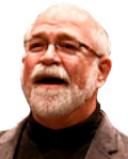Loneliness
On Levitating Dachshunds, Crop Circles, and Other Conspiracy Theories
Personal Perspective: True belief is more than a simple mistake.
Posted July 15, 2022 Reviewed by Davia Sills
Key points
- Human rationality has its limits.
- People often have reasons, however misguided, for why they believe in conspiracy theories.
- In an age of rampant misinformation, it's important to understand how such beliefs develop and to consider the facts before leaping to judgment.
It is easy to list a dog’s virtues. Our best friends are by turns loyal, responsive, supportive, protective, loving, obedient, goofy, tireless, durable, faithful, empathetic, courageous, nimble, quick, and clever.
Dogs are clever in specific ways that might disturb our self-satisfaction. The senses are a good place to start the list. Their brains devote a full 2 percent of volume to the olfactory sense, ours a mere .03 percent, and so they smell in technicolor. The dog’s sense of smell is so acute that, for example, they can not only identify a footprint but sequence its direction of travel by sniffing tracks for minute degrees of freshness.
As for hearing, note that we humans comfortably register sounds between 2,000 to 5,000 HZ, but dogs operate in the world at ten times that range. They hear a symphony when we hear the world through a tinny transistor radio. They can see in the dark, as I recently discovered when, at deep dusk, our doodle bristled at the sight of a gray-on-gray Florida bobcat looming invisibly close by. And need I point out that a 7-month-old human baby cannot retrieve a ball or catch a frisbee?
In my teens, our household adopted a dachshund from an elderly couple who had come to realize that they could no longer care for him satisfactorily or, as we later surmised, had no hope of keeping up with him. He came with a cute name, Bubeleh, “sweetie pie” in Yiddish, or, more freely, “little buddy.” But he might better have been named Kluger for “smart” because that handsome dog, an athletic specimen, was also possessed of keen problem-solving intelligence.
Here are two examples, one physical and one mental.
One day, we returned home to find Bubeleh standing on the mantlepiece. How had a 10-inch-tall wiener dog managed to get there? We reconstructed a trajectory—from the floor to the hassock, from the hassock to the sofa to the sofa top, then to the pedestal, from which he launched stupendously and nailed a landing. If attaining that height seemed improbable, at that point, his length made a U-turn impossible. And so there he stood, stranded and looking shamefaced after having devoured a bowl of “Bridge Mix,” the lofty object of his desire.
We resisted a simpler, tempting explanation—levitation—for the same reason that I explain crop circle patterns in the carpet as the result of a robot vacuum stuck in swirl mode rather than the action of aliens. But a second example captures a coherent but hilarious canine thought process that instructs us about the shortcomings of our own rationality, the linchpin of our human self-regard.
Here is the next story; it also bears comically on the dachshund’s stature. Bubeleh was so short that when he walked near the fireplace, he could fit behind and underneath the fireirons leaning there. One day, I heard a clang and a yelp and figured that he had brushed against the poker and tongs, causing them to fall on top of him. He had wheeled his long body around to confront the sinister face of a cast-iron match safe. I found him growling and barking at the gargoyle.
Thereafter, whenever Bubeleh came near his nemesis, he would step sideways and describe a semicircle around it, pointing inward and growling all the while.
Even though comically incorrect, his was a sound inference, and his chain of reasoning was elegant. The noise had scared him. The tools had pained him. The culprit lingered at the scene of the crime. Thus, he held the horrible face responsible. His simmering outrage became the prototype of a superstition, a belief to live by. For the rest of his life, he protected himself and his humans from this malign influence.
Which brings us back to crop circles
The origin of crop circles has been well-known since the late 1990s when the two guilty pranksters, playful British conceptual artists named Doug and Dave, owned up to and demonstrated to reporters how they methodically produced the fractal geometric patterns in fields of grain by progressively tamping down the stalks with a square of tethered plywood. (Their drawings still exist.) They outed themselves gleefully in the face of a thriving industry of conspiracy theorists that, in books, public lectures, and “documentary” films, speculated wildly for consumers that the patterns emerged from a variety of esoteric forces.
Whether driven by gullibility or the profit motive (or sometimes both), the speculations, though ingenious and complex, were, of course, utter claptrap. Patterns emerged from magnetic energy, so said the theorists. Or aliens were responsible for leaving cryptic messages for us Earthlings to decipher. Or it was ghosts. Or, rising from the very earth itself, the patterns were prefiguring the imminent disasters foretold in Mayan prophecy. Or, perhaps the predictions were Sumerian. Anyhow, it was a long time ago, and those people were wise in ways that we could never imagine.
Doug and Dave’s confession meant little to true believers. Undeterred by the truth, defiant in the face of facts, theorists fought back. Knavishly, the pranksters were simply imitating genuine crop circles! Aha!
True belief goes beyond misconception
Bubeleh could not be talked out of his misconception since English is not a wiener dog’s métier, but otherwise-sensible humans held on to their beliefs. Yearning for a true belief like this is more than a simple mistake; it may stand as an allegory for our times. In 2009, for instance, The Telegraph reported that according to the royal private secretary, both Queen Elizabeth and the Duke of Edinburgh “took an interest” and subscribed to crop-circle newsletters addressed to them at Buckingham Palace. The Evening Standard insisted that the phenomenon had “baffled scientists for decades,” and so it was natural that the Queen should be “intrigued.” (No, it hadn’t, and no, it wasn’t.)
As a kid, I sang along with Jiminy Cricket’s tuneful “You Are a Human Animal.” “You are a very special breed,” he chirped. “You are the only animal who can think! Who can reason! Who can read!” (Those three observations are mostly true, though Bubeleh proved himself capable of rudimentary if unreliable reasoning.) The insect made an impression on me. The current infection of misinformation, lonely longing, and conspiracy places upon us an urgent moral obligation to base our thinking on indisputable fact, to temper reason with evidence, and to distinguish between sound argument and bullshit.
References
Colin Andrews, Pat Delgado, Crop Circles: The Latest Evidence, Circle Seekers Press (1991)
Thomas B. Edsall, “Why Conspiracy Theories Flourish in Trump’s America,” The New York Times (June 22, 2002).
Henry G. Frankfurt, On Bullshit, Princeton University Press (2005)
David Hume, T.H. Green, ed., A Treatise of Human Nature: Being an Attempt to Introduce the Experimental Method of Reasoning into Moral Subjects & Dialogues Concerning Natural Religion, Longmans, Green & Co (1882).
Stephen Mason, “The Great Crop Circle Mystery: Amazing Designs in the Fields,” Psychology Today, (June 15, 2010) https://www.psychologytoday.com/us/blog/look-it-way/201006/the-great-cr…
“Queen ‘Intrigued’ by Crop Circles,” London Evening Standard, (April 12, 2002), n.a.
Alison Simpson, “The Queen and Duke of Edinburgh ‘Take an Interest’ in Crop Circles, says Private Secretary,” The Telegraph (January 23, 2009).
Peter Wilson, “Crop Circles were made by Supernatural Forces named Doug and Dave,” The New York Times (June 12, 2022).




